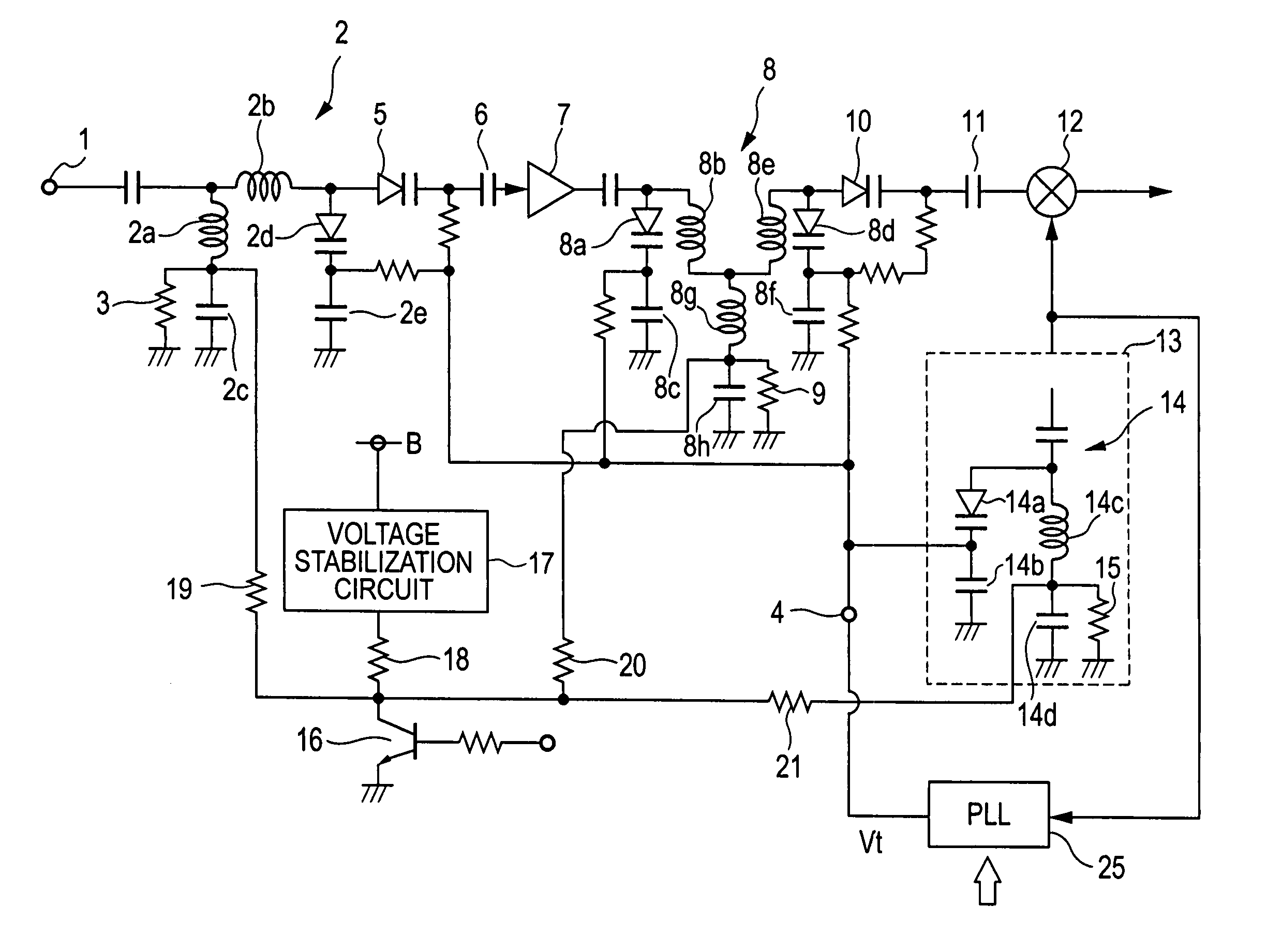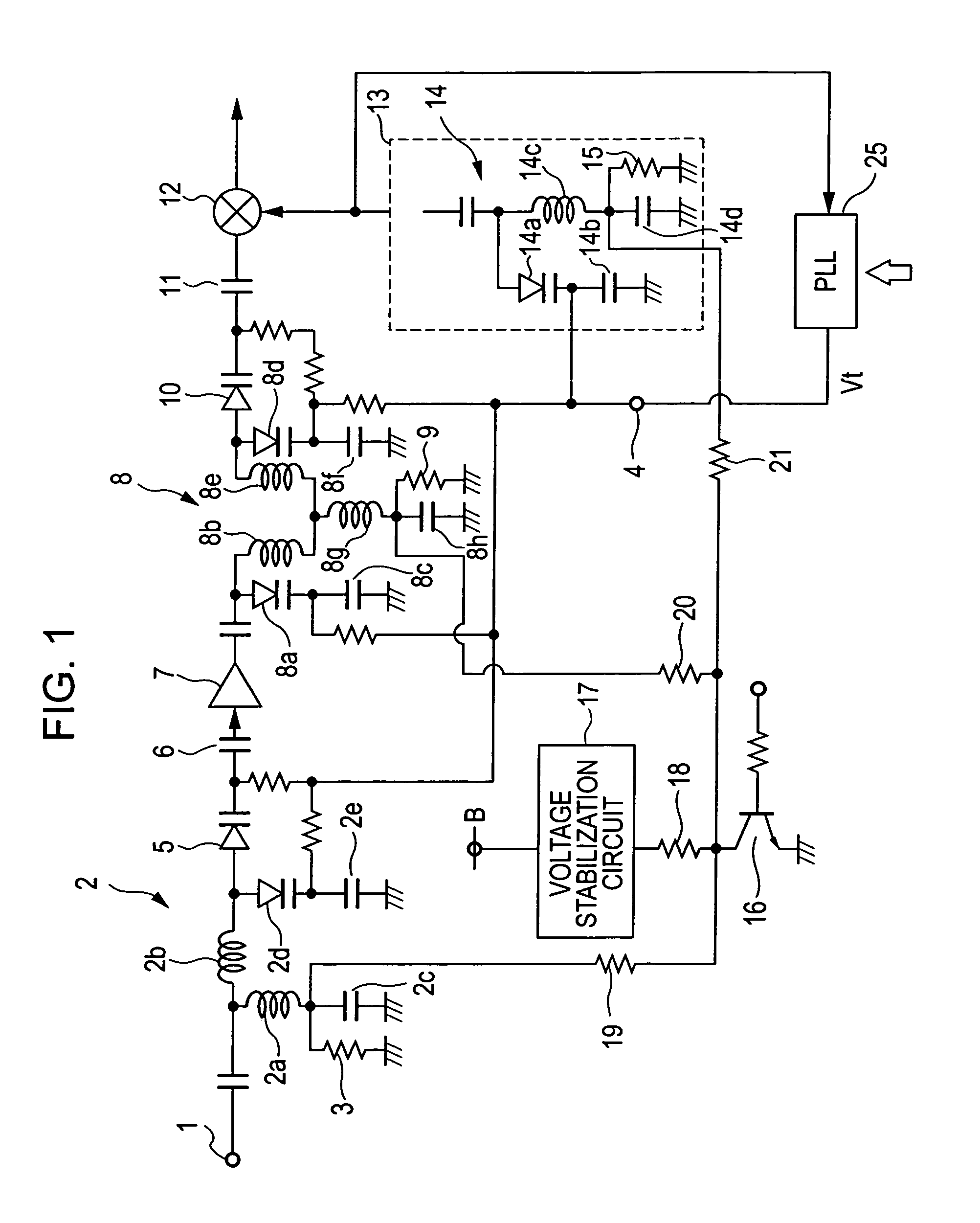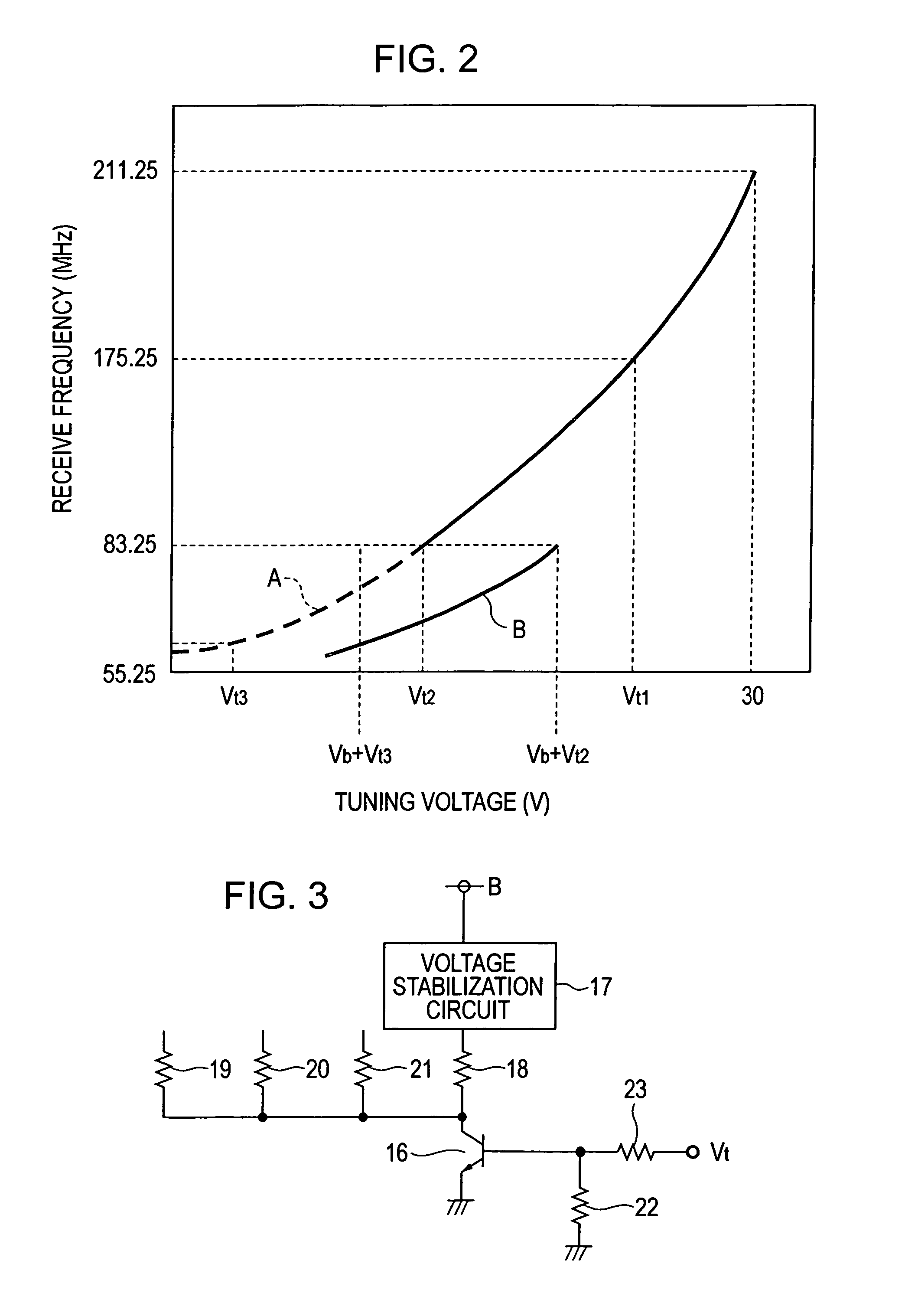Wide-frequency-range television tuner
a television tuner and wide-frequency technology, applied in the field of television tuners, can solve the problems of unstable low tuning voltage and complicated structure of tuning circuit, and achieve the effects of increasing the voltage of the varactor diode, extending the range of received frequencies, and increasing the voltage of the anode of the varactor diod
- Summary
- Abstract
- Description
- Claims
- Application Information
AI Technical Summary
Benefits of technology
Problems solved by technology
Method used
Image
Examples
Embodiment Construction
[0030]FIG. 1 is a circuit diagram of a television tuner according to an embodiment of the present invention. For example, an input terminal 1 receives television signals in a VHF broadcast band according to the standard in the United States (the low band covers the frequency range of 55.25 MHz to 83.25 MHz and the high band covers the frequency range of 175.25 MHz to 211.25 MHz).
[0031]An input tuning circuit 2 is connected to the input terminal 1. The input tuning circuit 2 is a tuning circuit that does not carry out band switching. The input tuning circuit 2 includes an inductance element 2a, an inductance element 2b connected in series to the inductance element 2a, a capacitor 2c which connects an end of the inductance element 2a to ground, a first varactor diode 2d whose anode is connected to the inductance element 2b, and a capacitor 2e which connects a cathode of the first varactor diode 2d to ground. A connection point between the inductance element 2a and the capacitor 2c is ...
PUM
 Login to View More
Login to View More Abstract
Description
Claims
Application Information
 Login to View More
Login to View More - R&D
- Intellectual Property
- Life Sciences
- Materials
- Tech Scout
- Unparalleled Data Quality
- Higher Quality Content
- 60% Fewer Hallucinations
Browse by: Latest US Patents, China's latest patents, Technical Efficacy Thesaurus, Application Domain, Technology Topic, Popular Technical Reports.
© 2025 PatSnap. All rights reserved.Legal|Privacy policy|Modern Slavery Act Transparency Statement|Sitemap|About US| Contact US: help@patsnap.com



